Travel log #26 - 30
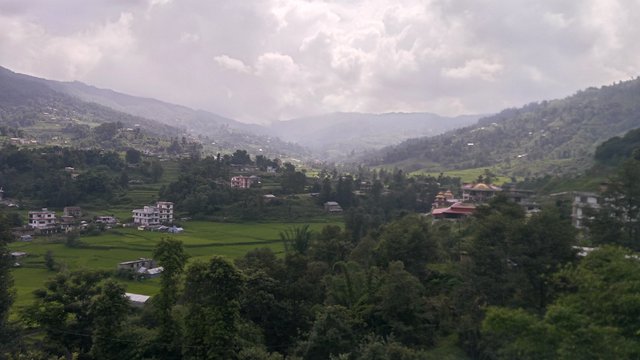
30.07.2017 Log 26
Nagarkot was one of those peaceful, unimportant villages, where not so much is happening and that might be the reason why I stayed there for four days. I walked all the short walks around it several times there and back, I marveled at the beauty of the nature around me, or I just sat in a shelter in a forest behind a nearby hill and read a book. I like these calm places. The atmosphere was very similar to that of Sikkim: the not so hasty life centered around simple chores as cooking, doing laundry, taking care of garden and livestock. When people are content with what they have, they don't need to go rushing around in pursuit of that doubtful materialistic wealth as we do back home. The people here seem to be happy with just opening their windows every morning to the spectacular sights everywhere around, sending the kids to school and then just working around the household. But such life is not for me, so I persuaded myself to move on. I wanted to walk back to Kathmandu through a town called Sakhu and to visit a famous temple Changu Narayan on the way.
Sakhu is not a tourist hot-spot, but there is this historic remark that made me interested: once upon a time there were five gates in the ramparts of the city. Each of them had its meaning. For example one of them was assigned to young brides wed to another village. During a great ceremony they were to leave the city through this gate. Another one served for the entrance of single lads who moved in from elsewhere. Except these gates (three out of the five are still standing) there is nothing worth mentioning in Sakhu. No hotels, no fancy restaurants, no foreigners. That's why I liked to be there. I could again observe the undisturbed life of the local people, without the influence of tourists and their money. And again I could see that though Nepal is not the richest country, the people are not doing that bad here.
On the other side Changu Narayan is on the must-see list. As one of the Unesco listed places in Kathmandu valley, it was full of tourists. Although even here the sad earthquake took its toll and the temple has to be supported by beams, it didn't take away much of its splendour. It's one of the beautiful pagoda-shaped temples of Nepal with astonishing detailed woodwork. After the sightseeing I went for a beer and got lazy, so I took a local bus to cover the remaining distance. Tomorrow morning I'm heading to Pokhara - as I wrote before - and after some planning I will start the trek which I suppose to be the longest, highest and hardest trek of my actual life.
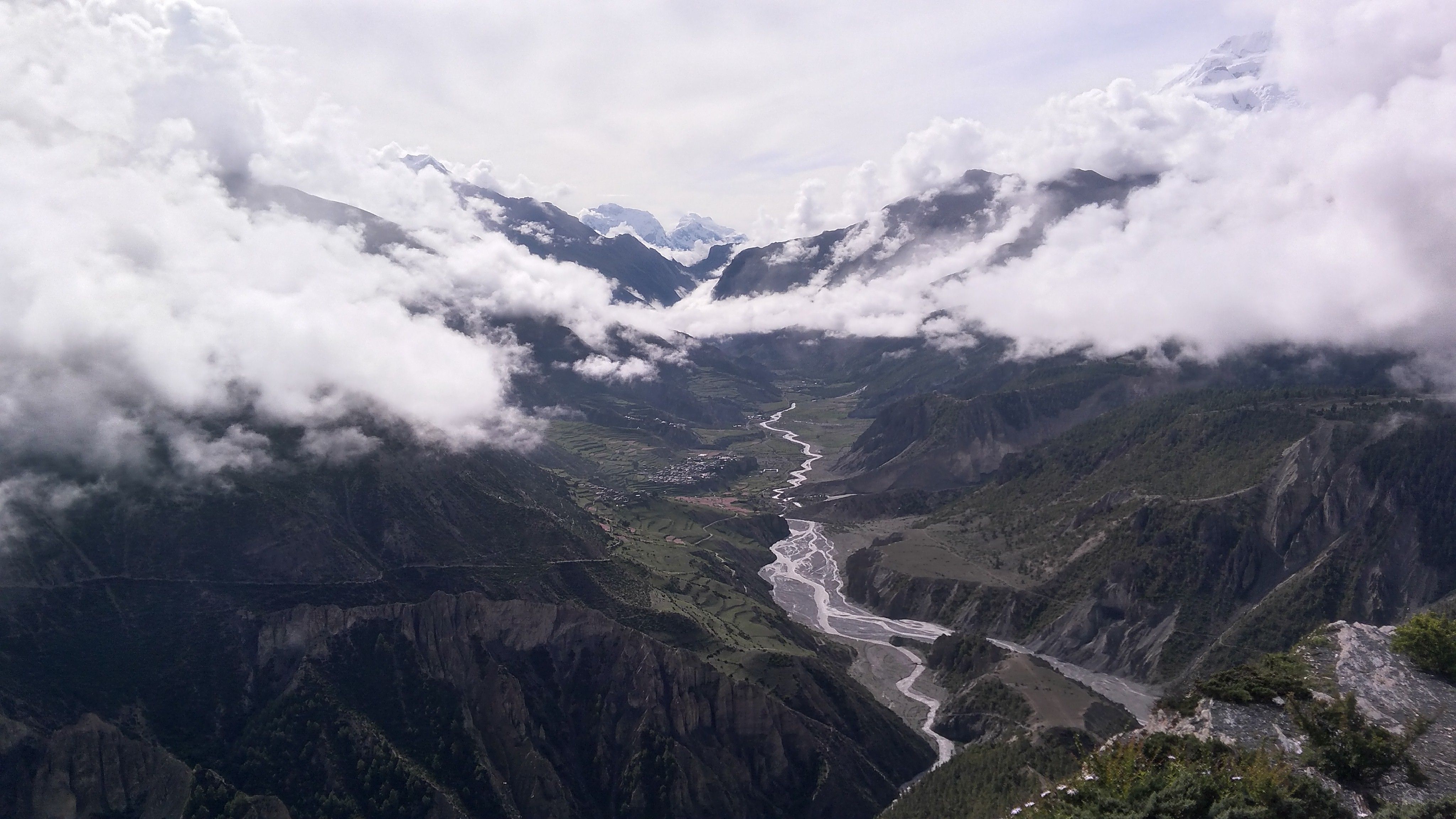
13.8.2017 Log 27
Four days ago, eight days into the trek, I stood in Thorong La pass. With the elevation of 5416m it is the highest place I've ever been to. To get there meant to walk from jungle through pine woods and huge flowering hills all the way to the kingdom of stones.
At a hostel in Pokhara I've got acquainted to Shoerd from Netherlands who had the same plan as me: the Anapurna Circuit. But because he already sorted all the paperwork in Kathmandu, he started the trek one day ahead of me. The evening before he left we had a beer together that he paid for and because I forgot to pay him back, I decided I will try to catch up on him. That happened right on my second day of walking in a village called Tal, so from there we teamed up. First few days of the trek we were following a furious river cut deep into a valley far below us, our path slowly but surely rising to meet the mountains. Soon we left behind the jungle full of ganja weeds and leeches and we entered the pine woods in the altitude of 3000m. By then we were on the way for four days and we made 90 kilometers.
From Manang there is a side trek to Tilicho lake, which in the altitude of 4949m is the highest lake in the world, so it would be real shame to miss it. The path led us through a canyon where the trees already gave way to grassy slopes with myriads of various flowers, or completely barren where a landslide took place before. The last part of the narrow path took us to very silent landscape, where the only noises were cracking of the ice in a glacier hidden in the clouds above and the sound of falling stones from a nearby hillside. The lake itself - so wonderfully turquoise blue - is laid in a shallow valley and clusters of low clouds were giving the whole place a dreamy atmosphere. After a short while of amazement we left this heavenly place because we started to feel the symptoms of altitude sickness. It was time to go back down.
After this two days long detour we got back on the original circuit. There was the way to the great heights ahead. Well acclimatized from Tilicho trek, we fortunately had no more troubles with the altitude. In one day we reached Thorung La base camp, which is the last place to spend a night before entering the high pass itself. On the D Day, when we were braving the pass, the weather wasn't much in favor. Deep in the clouds we were gasping for the air, putting mechanically one foot in front of the other. Walking painstakingly slowly it took us two hours to reach the marker that congratulated us for the achievement. There was a rare window in the clouds that unveiled frozen mountaintops across a broad plateau. The Thorung La pass is clenched between two rocky mountains with ice-caps. It is so high, that not even moss grows here. I tied my prayer flags to a big heap of others and thanked the mountains inwardly for the fact that we made it here alive. Tired, we started to descend towards Muktinath, from where it was all the time going downhill. Tomorrow we will reach Nayapul, where there is the official end of the trek.
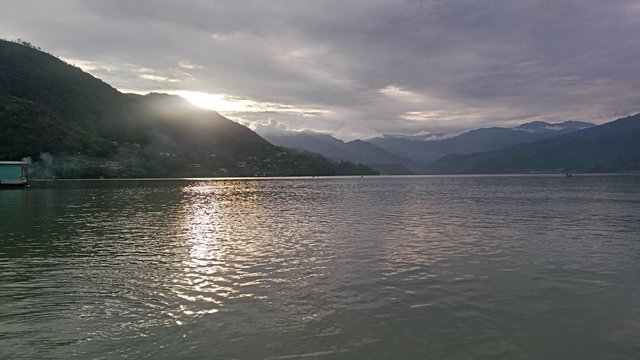
23.08.2017 Log 28
After the challenging trek I rewarded myself with few days of rest. Pokhara, bathing in the sun, was a perfect place for it. I spent two days with Sjoerd and with Miriam and Marta, two Spanish girls we met on the trek, and after they all left, I hanged around the city on my own for few more days. I went to see the lake temple, which wasn't that breathtaking, and I visited a nice bar combined with an outdoor cinema. And that was such a chilled place, that in the end I've been there twice.
When I started to feel guilty about doing nothing I grabbed my backpack once again and hiked a hill to Sarangkot. Known for its spectacular views of mountains and Pokhara valley, Sarangkot lies on the top of a mighty hill, so the five kilometers to get there was a sweaty labour. I should probably get used to it by now, there are no flat lands in Nepal. On the way there I met a friendly villager Hom, who invited me for a cup of ginger tea and thus probably saved me from exhaustion. I was in Sarangkot for two days, waiting for good weather to enjoy the view. But it was in vain, as I expected. The hills were in clouds every morning and evening.
So I went back to the city and took a bus to Dumre. On a hill beyond Dumre (why, oh why!) there lies another of Nepal's beautiful villages called Bandipur. Unbroken I started conquering the steep slope. That meant another hundreds of stairs and another litres of sweat, but I must be getting into it, because it took me only an hour to get there. In part it was also because of rain that reached me from the valley and motivated me to go fast. I entered Bandipur yesterday at 6pm and found myself a cheap accommodation (no easy task in this place favoured by tourists). At 8pm, after a dinner, I crushed to the bed. Now in the morning the weather is still quite shite, but despite it I'm slowly getting up to explore this beautiful village.
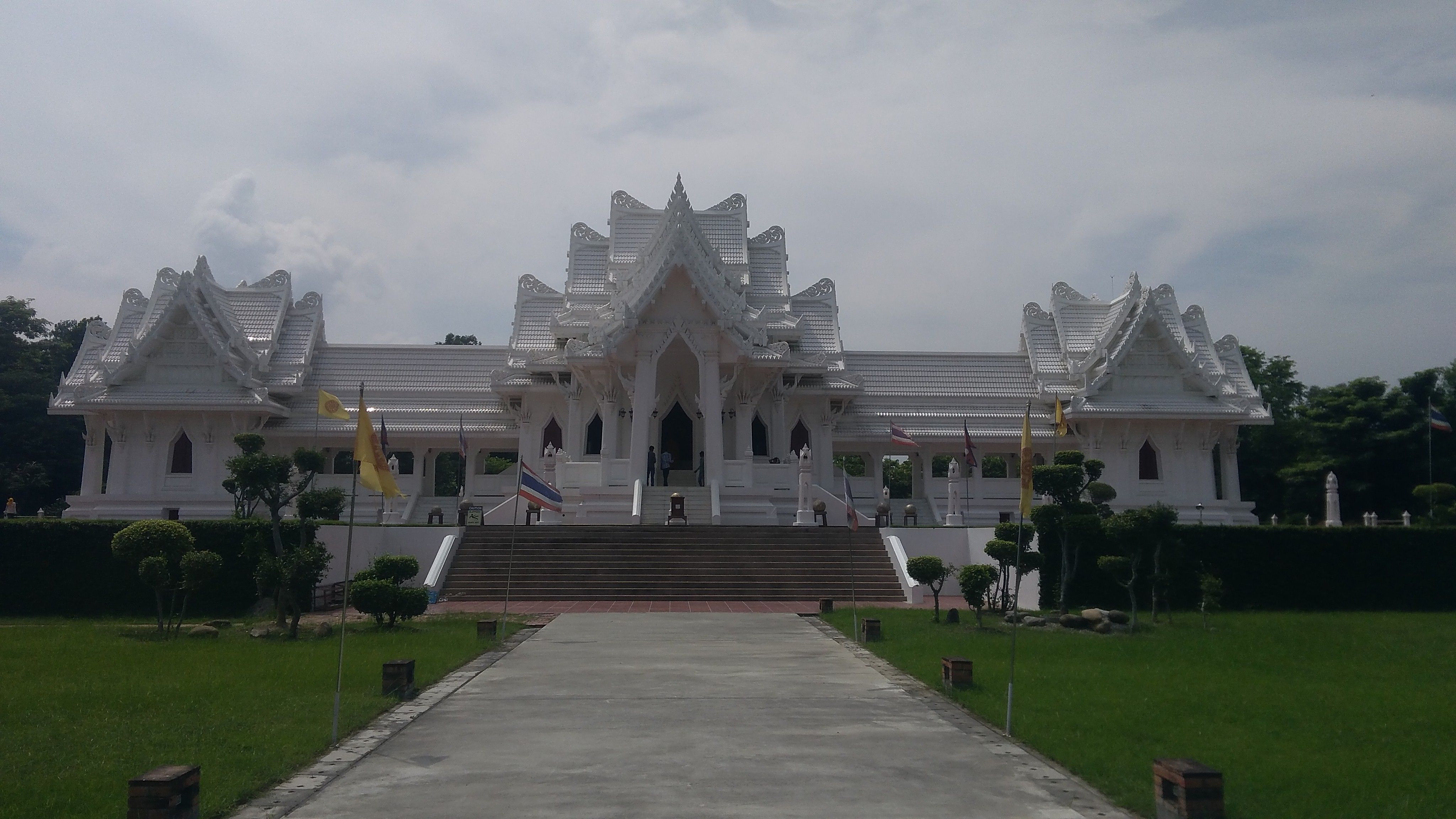
27.08.2017 Log 29
My last stop in Nepal is Lumbini, the birth place of Buddha. Lumbini is near the border with India and that I could feel right after my arrival: it is insanely hot here (something I forgot about in the mountains), the meals are much more spicy and amongst the people living here is quite a few Indians. They can be easily recognized not only by their carefully trimmed moustaches, but also by their features and behavior. In the sacred gardens of Lumbini there are temples representing all countries where Buddhism is one of major religions. Thus I've got a nice recollection of my entire south-east Asian journey. I visited them all - the Chinese temple, Vietnamese, Cambodian, Thai, Myanmarese and Indian.
Tomorrow I'll return to India with only a rough plan where to. My journey sort of ends here, I mean the discovering and adventurous part of it. I've been to all the countries I wanted to visit, I learned something about their culture and history, I've seen some of their natural beauty. I consider myself honoured to meet many a traveler who have it the same way as me, some of them I now call friends. I've spent a lot of money for a lot of experience far overreaching it's value. I'm satisfied.
In India I will wait for three weeks for my friend Jasmína, who will fly there from Czech Republic and together we will go to Thabarwa in Myanmar, back to the monk place, that enchanted me earlier. There we will be helping, meditating and searching for harmony for approximately two months, before the return to Europe. The hectic Europe, where money means more than time, where the results are more important then feelings and where in the shadows of materialism lies human spirituality, so common in the life the people here.
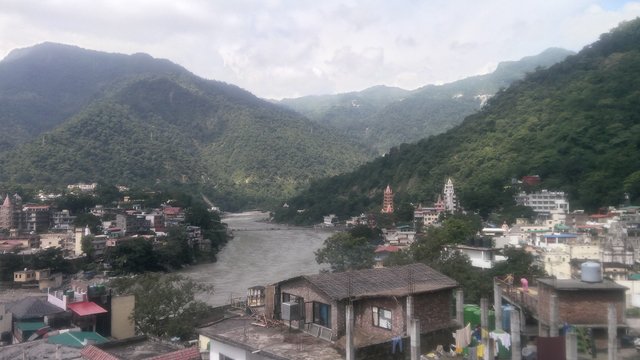
04.09.2017 Log 30
The process of crossing the Nepalese - Indian border was slow, but smooth, so once again I entered this inconsistent country. My first destination was Lucknow. I arrived there at midnight and searching for a place to sleep led me through dark, narrow lanes full of sleeping people and alert dogs. It made me wonder how did it happen, that I survived this walk without any damage caused to my body or properties. This not really interesting city is a portrait of real India. It is choked by rubbish (huge heaps of it were lining the road even on the way there, smelling really bad), the traffic is chaos itself and the people curiously watch every movement of a traveller naive enough to come there. I wanted to stay there for a couple of days, but a stream of coincidences sent me on my way the next day.
As my next destination I chose Rishikesh, the city of yoga and spirituality on the banks of holy Ganga. When I got off the train (that was unsurprisingly late, this time only four hours) I was taken aback by dread, because at the first impression Rishikesh wasn't any different from Lucknow. I wondered about what the hell drags all the tourists here and mainly: where are they? I got my answers the next day, when I found out that I'm being in the lay part of the city and to get to the spiritual part I need to cross the river. And really: right after I entered the other part I could tell the difference. This "nicer" Rishikesh is clean, relatively quiet and offers many possibilities to study yoga, or join meditation sessions, or to walk into an ashraam. And people from all over the world definitely embrace the opportunity for spiritual growth. Not only these days, they always did. Even The Beatles came here in seventies to contemplate life. Rishikesh is beautiful, cheap and offers many encounters with lovely people, so I can surely say that I chose a good spot to take a break from life on the road.
Congratulations @amek665! You have completed some achievement on Steemit and have been rewarded with new badge(s) :
Click on any badge to view your own Board of Honor on SteemitBoard.
For more information about SteemitBoard, click here
If you no longer want to receive notifications, reply to this comment with the word
STOPbeautiful!
Thank you. :-) Feel free to scroll down and read previous entries. Big love!